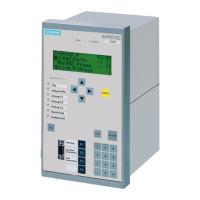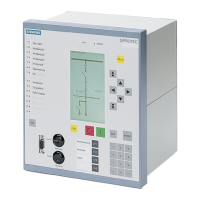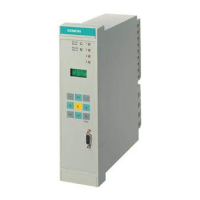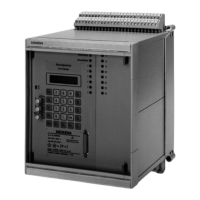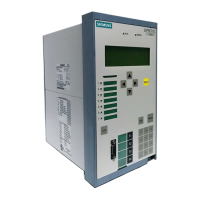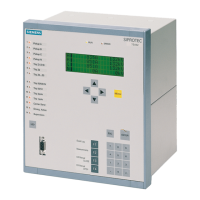2.17 Additional Functions
245
7SD610 Manual
C53000-G1176-C145-4
Classification of
Indications
Indications are classified as follows:
• Operational indications
: messages generated while the device is in operation: They
include information about the status of device functions, measurement data, system
data, and similar information.
• Fault indications
: messages from the last eight system faults that were processed
by the device..
• Indications on Statistics
: they include counters for the switching actions of the circuit
breakers initiated by the device, maybe reclose commands as well as values of in-
terrupted currents and accumulated fault currents.
A complete list of all message and output functions that can be generated by the
device, with the associated information number (no), can be found in the Appendix.
There it is also indicated to which destination the indication can be reported. If func-
tions are not present in the specific version of the , or if they are set to disable, then
the associated indications cannot appear.
Operational Indica-
tions
Operational indications contain information that the device generates during operation
and about operational conditions.
Up to 200 operational indications are stored in chronological order in the device.
Newly generated indications are added to those already there. When the maximum
capacity of the memory is exhausted, the oldest indication is lost.
Operational indications arrive automatically and can be read out from the device
display or a personal computer at any time. Faults in the power system are indicated
with „Network Fault“ and the present fault number. The fault indications contain de-
tailed information on the behaviour of the system faults.
Trip Logs Following a system fault, it is possible for example to retrieve important information re-
garding its progress, such as pickup and trip. The start of the fault is time stamped with
the absolute time of the internal system clock. The progress of the fault is output with
a relative time referred to the instant of fault detection, so that the duration of a fault
until tripping and up to reset of the trip command can be ascertained. The resolution
of the time information is 1 ms.
A system fault starts with the recognition of a fault by the fault detection, i.e. first pickup
of any protection function, and ends with the reset of the fault detection, i.e. dropout
of the last protection function. Where a fault causes several protective functions to pick
up, the fault is considered to include all that occurred between pickup of the first pro-
tective function and dropout of the last protective function.
If auto-reclosing occurs, then the network fault ends after the last reclosing shot, which
means after a successful reclosing or lockout. Therefore the entire clearing process,
including the reclosing shot (or all reclosing shots) occupies only one fault record.
Within a network fault, several fault records can occur (from the first pickup of a pro-
tective function to the last dropout of a protective function). Without auto-reclosing
each fault record represents a network fault.
Spontaneous
annunciations
After a fault, automatically and without operator action, the most important fault data
from the general device pickup appear on the display in the sequence shown in the
following figure.
www . ElectricalPartManuals . com
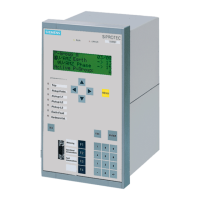
